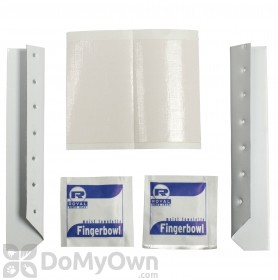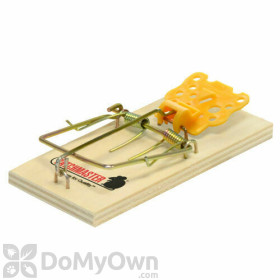How to Rodent-Proof Your Home

Inspect Your Home for Rodent Intrusion
The first step in rat proofing or mouse proofing your home should be a thorough inspection.

- Inspect foundation all the way around the home. Any crack, gap or hole that is 1/4" or larger needs to be repaired. In holes that are 2" or smaller, Stuf-Fit Copper Mesh or Pur Black Foam can be used. In larger holes or gaps you may need to use sheet metal or hardware cloth with less than 1/4" mesh to repair the area.
- Check all doors, door frames, windows and window frames. Replace any weather stripping that does not create a tight seal. Replace any broken window panes. Replace any damaged window or door screens. Repair any gap, hole or crack around frames that are 1/4" or larger. If gnawing damage is present on doors, a metal kickplate should be installed to prevent any additional gnawing.
- Inspect all trees and hedges near home. Any tree branches or hedges that touch or hang over the house should be cut back to prevent rodent from using them as pathways onto and into the house. Keep grass short and trim bottom of hedges or bushes to expose soil beneath and eliminate rodent harborage areas.
- Inspect the roof. Check shingles, roof ventilators and vent screens to be sure they are secure and undamaged, replacing or repairing as needed. Make sure the chimney is capped to prevent animal entry.
- Look at all utility entry points. Areas where utilities enter the home can also make easy access points for rodents. Make sure any gap or hole larger than 1/4" around the wire, cable or pipe is sealed using Stuf-Fit Copper Mesh, Pur Black Foam, hardware cloth and mortar or sheet metal where needed.
- Pipes that run vertically up houses can be utilized by rats as direct pathways onto and into your home. You can paint a 12" band around the pipe at least 3 feet from the ground using high gloss clear paint to stop rodents from climbing. As an alternative you can place circular metal rodent guards around the pipe.
- Remove food and water sources when possible. Feed pets in the morning and remove any uneaten food immediately. Find and fix any leaking pipes or drains. Remove bird feeders if possible to eliminate the bird seed as a possible food source.
- Clean up any rodent feces and urine found during the inspection. Be sure to wear protective gloves and a respirator to avoid breathing in any fecal matter. Use a labeled disinfectant solution such as Nisus DSV to clean rodent nesting areas and entry points to get rid of any pheromones left behind that may attract future rodents.
Products needed for Step 1
Controlling an Existing Rodent Infestation
If you have a current infestation of rodents please read the following articles to learn how to get rid of the problem:
Products needed for Step 2
Rodent inspection and rodent exclusion products:
View additional Mouse Control and Rat Control products on our site, or give us a call at 866-581-7378 if you have questions.














